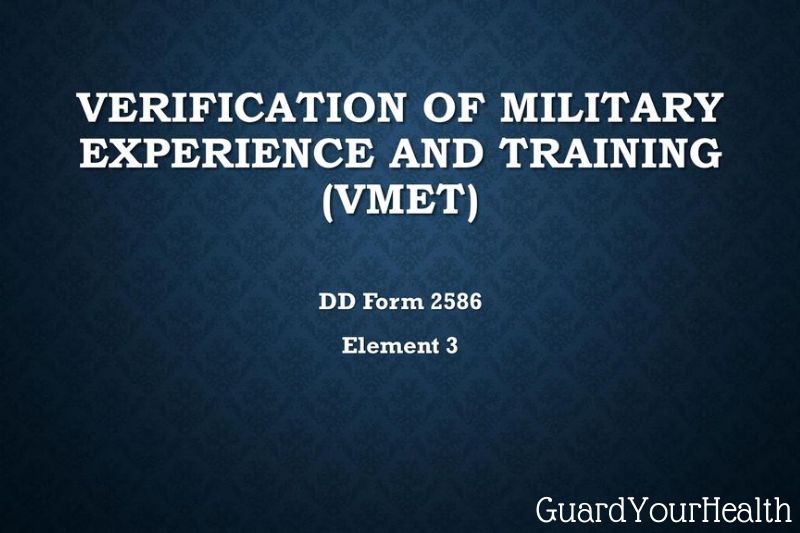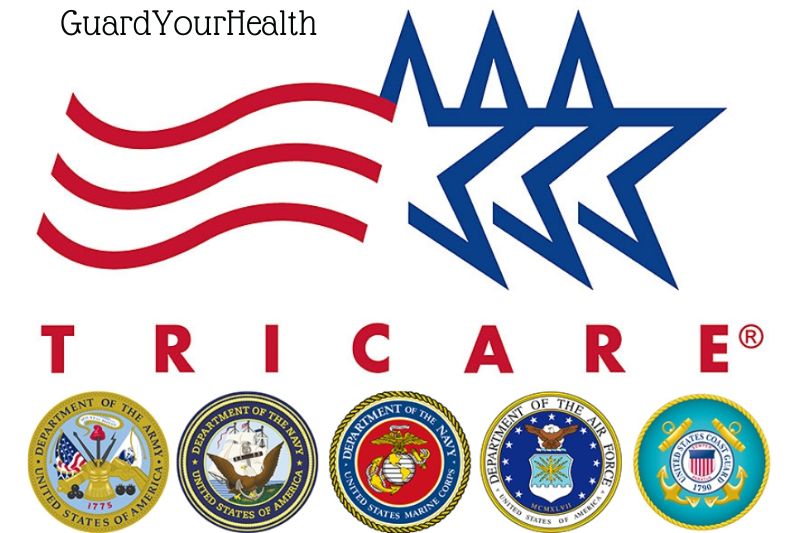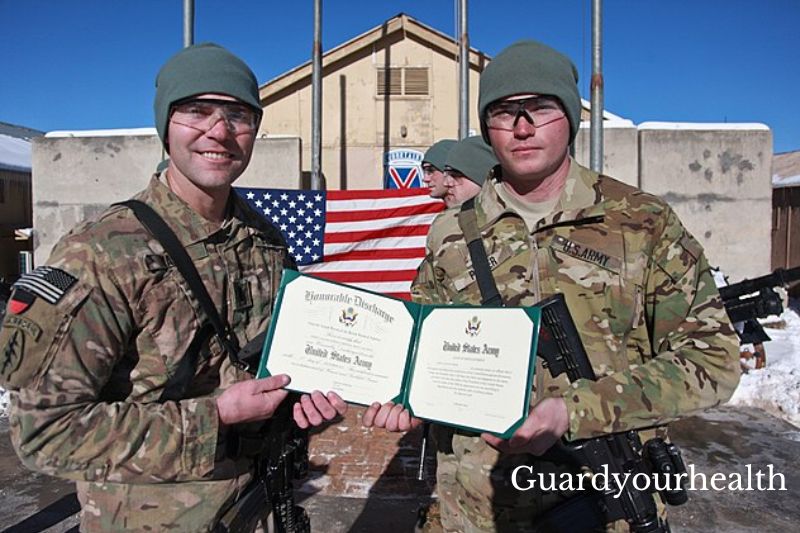There is no one-size-fits-all answer to this question, as the best way to get out of the military and be successful may vary depending on your individual circumstances.
However, some tips on how to make a successful transition from military to civilian life include finding a support network, getting involved in your local community, and planning for your financial future.
Additionally, it is important to be patient and flexible as you adjust to civilian life and to remember that there is no shame in seeking help if you are struggling.
In this blog post, GuardYourHealth will give you some effective ways to get out of the military and be successful in the future.
Consider Whether You Should Sell or Take Your Leave.
Terminal leave is one factor to take into account. Take it with you when you depart or sell it back. Between the time you consider leaving the military and the time you actually do, you can also take some time off.
You do not have to report back if you take your leave; it is taken just like any other leave. Therefore, you may simply go home and get paid. One of the typical methods to leave the military is in this fashion.
You can use the time to adjust to life in the real world. Up until September 1, you can withdraw your military salary.
You receive a third of your base salary for each day of leave that is sold back. You have a maximum of 60 days to sell back. In this scenario, you will be required to pay state tax in addition to the federal tax of 25%. You’ll continue to serve on active duty and get your regular salaries until September 1.
Ways To Get Out Of The Military And Take Advantage of Your Transition Support
Attend the Military Transition Assistance Program TAP workshop; it will assist you in transitioning from the military to civilian life. All of the training, resources, and briefings are available here.
1. Consult With Your Divorce Attorney
Setting up a pre-separation appointment is the first step. To complete this, you must go to the Transition Assistance Office at your installation. Typically, the Family Center will be where it is.
For each branch of the armed forces, there are various programs. They might go by various names. For instance, you can use the “Soldier for Life” program while moving from the Army to the civilian world. It will be called the “Transition Readiness Program” for the Marines and the “Transition Goals, Plans, Success” for the Navy.
A year before you intend to divorce, you must make the appointment. It is advised that you do this at least 180 days before you separate, albeit it can take a long time to become ready for the transition.
The “Pre-Separation Counseling Checklist” will be discussed with you by your separation counselor to make sure you get the support and guidance required for a smooth transition.
The counselor will also assist you in developing a requirements analysis, gaining access to resources for moving and your job, as well as other advantages.
The next step is to write your ITP, or individual transition plan. It serves as a road map for achieving technical training, employment, and education goals. Money decisions, benefits decisions, and employment decisions will be the three main topics of the ITP.
During this time, you will be able to evaluate your level of preparation on both a personal and professional level and determine what needs to be done to make the transition go as smoothly as possible.
2. Prepare Your VMET Document.
Obtain your DD Form 2785, commonly known as the Verification of Military Experience and Training (VMET) document. The procedure is easy:
- Check out the DMDC webpage.
- Click on the “Request Document” and “Request Cover Letter” tabs
- Download the files.
- The documents on paper
To obtain the VMET document, you must have a Common Access Card (CAC) or DFAS myPay PIn. Contact your transition counselor if you require assistance.
This can be used as evidence for school credits or for experiences and abilities at possible employers. It can also be utilized to obtain certificates and permits.
3. Choose Between Going To A Job or School.
In case you want to continue your study after leaving the military:
- Choose the type of degree you want to pursue.
- Start your search and selection procedure.
- Choose a school or institution, then a program.
Note: The DoD’s online skills course testing is available if you are unsure where to begin. Knowing where you stand academically might make choosing and doing your research easier. You can also go to career fairs to get ideas.
Consider transferring your Post 9/11 GI BILL benefits to your family if you are not pursuing higher education. If you decide to do this, you HAVE to finish it before you go. Transferring is not permitted once you go.
If you’re looking for work:
Step 1: Choose A Career Path
You can either pursue a new, alternative job route or continue with your current military professional field and find a civilian equivalent.
You can apply your military training and experience for the latter. In this situation, the transition from the military to the civilian workforce is simpler.
There is someone who can provide advice whether you are attending school or the office. There is a career counselor and a military education service officer, respectively. The Department of Veterans Affairs is another resource you have at your disposal. They can point you toward the resources veterans need to transition back into society successfully.
Step 2: Compose A Resume
In order to move from the military to civilian life, you will need to create a strong résumé. There are several resources available to you for resume assistance. Take Hire Heroes USA as an example. Among the errors you must avoid are:
- excessive use of military jargon
- not adapting your abilities to fit with opportunities in the civilian sector
- not utilizing quantitative data to promote oneself
Step 3: Start Your Employment Search.
The quest has begun! Utilize the tools provided to you throughout your TAP course and counseling sessions. Make contact with your network. If you are unsure about where to begin, look at these websites:
- RecruitMilitary – There are 491,866 open positions as of this writing.
- Hire Heroes USA – They host virtual career fairs and chances with partners and without partners.
- VA for Vets – Numerous job forums to help you find employment.
The National Resource Directory – Various government organizations have employment resources.
4. Consider Where You’ll Live (are you purchasing a home?)
You can start looking into where you’ll be living once you know where you’ll be working or studying. Ensure you are informed of VA financing and mortgage choices if you consider buying a new home.
Option 1: A mortgage with a Fixed Rate Throughout the loan, the interest rate is constant. It often lasts 15 to 30 years. This is the best option if stability is important to you or if you have doubts about your job security.
Option 2: A mortgage with an adjustable rate. The interest rate varies in response to changes in the market. Most military veterans who anticipate staying in their homes for no more than five years choose this sort of mortgage.
Option 3: Hybrid Adjustable Rate Mortgage, For three or five years, the interest rate is fixed before changing annually after that. Due to the cheap rates in the early years, short-term buyers choose this.
Option 4: Growing-Equity and Graduated Payment – The initial monthly payment gradually rises. Growing-Equity (GEM) tends to increase in the loan principal, whereas Graduated Payment (GPM) tends to climb in the sixth year.
5. Change Your Health Insurance Plan or Keep Your TRICARE Coverage.
Consider your health care strategy next. Within 90 days, you must switch from your military health care to a plan. TRICARE is giving you this 90-day window to locate a new health insurance plan. You must apply to keep your benefits as a retiree if you choose to keep your TRICARE coverage.
If you’re starting a job, your company can offer you an affordable health care option through the Employer-Provided Civilian Health Care program (HMO). The Department of Veterans Affairs’ Civilian Health and Medical Program (CHAMPVA) provides an additional choice. It is a type of health insurance where the VA pays a portion of your medical costs.
Additionally, you can go in person to the closest facility. Use these resources to find one:
- Find the nearest military hospital
- Find a VA Medical Center
6. Purchase New Life Insurance (For you and your family)
Consider your life insurance options after receiving medical attention. When you leave the service, the Service Members Group Life Insurance (SGLI) that you previously had will no longer protect you.
You should do your study and purchase life insurance that meets your family’s needs. Consider the insurance provider, premium price chart, and term coverage when doing this.
How To Get Out of The Military Early
Conscientious Objector Discharge
A member who can persuade the military that he or she is a conscientious objector may be discharged. This is not as simple as it appears. To begin, you would need to demonstrate that your beliefs changed significantly after you enlisted in the military because you must certify that you were not a conscientious objector at the time of voluntary enlistment.
You can’t pick and choose which wars to oppose. A conscientious objector is defined by law as someone who opposes participation in all wars. The person’s opposition must be deeply held and based on religious belief and training.
The applicant must demonstrate that once acquired; these moral and ethical convictions have directed their life in the same way that traditional religious convictions of equal strength, depth, and duration have directed the lives of others. In other words, the applicant’s primary controlling force in life must be the belief upon which conscientious objection is based.
The applicant bears the burden of proving a claim of conscientious objection as grounds for separation. To that end, applicants must demonstrate, through clear and convincing evidence, that the nature or basis of their claim meets the criteria outlined in DoD Directive 1300.6, Conscientious Objectors, for conscientious objection and that their beliefs are genuine.
When evaluating applications for this status, commanders consider relevant factors such as: home and church training; general demeanor and pattern of conduct; participation in religious activities; whether ethical or moral convictions were gained through training, study, contemplation, or other activity comparable in rigor and dedication to the processes by which traditional religious convictions are formulated; the applicant’s credibility; and the credibility of the presiding officer.
Early Release for Education
If a military member is within 90 days of their normal separation date, Department of Defense Directives allow them to be discharged early to pursue their education.
Military Hardship
A military hardship discharge is an option if you want to know how to get out of the military early. This type of discharge, however, is difficult to achieve.
The military anticipates that the hardship will worsen over time since signing up for active duty.
Furthermore, the only way to end the hardship is through a military hardship discharge.
A genuine hardship may involve a situation with the service member’s immediate family in which the service member has no other options and is not temporary. A sole parenting situation, for example, may result in a military hardship discharge.
Furthermore, this type of discharge is only applicable when the hardship is in the immediate family or the only living blood relative remaining in the family.
The Convenience of the Government
This is a catch-all category for voluntary separations that do not fall under the purview of specific programs.
Discharge, in order to enter a commissioning program, is one example. The military can also use this provision if it would prefer that you leave but does not have a legal basis to do so under any other separation program.
Another scenario would be winning the state lottery and becoming a multi-millionaire overnight. A 3-striper millionaire arriving at work every day in his private helicopter would most likely be detrimental to morale and discipline in the armed forces. In such cases, they would almost certainly approve a discharge request under the guise of “government convenience.”
Entry-Level Discharge
The entry-level separation is one option for leaving the military early.
The service member is discharged before completing 180 days of active duty in this type of separation.
The countdown to 180 days begins when a service member’s contract goes into effect.
This type of separation is less of an opportunity for a service member to break free from their service contract. Instead, it is a method for commanders to determine who is unfit for service.
Some of the reasons for an entry-level separation are as follows:
- Failure to adapt to military life
- Inability to progress through training Due to a lack of self-discipline
- a lack of effort Psychological issues
- Minor disciplinary problems
- All of these will be considered by the commander as reasons for an entry-level separation, but commanders should only use this type of separation if the behaviors are unintentional.
- If a commander believes a service member is using a lack of effort to avoid service, the outcome may be different.
Read more: Can You Buy Out Your Military Contract? How Much To Buy Military Contract?
Conclusion
The best way to get out of the military and be successful is to have a clear plan. Know what you want to do with your life and what you need to do to get there. Be sure to set realistic goals and be willing to work hard to achieve them. When you leave the military, take advantage of all the resources available to you to help you transition into civilian life. Finally, don’t be afraid to ask for help when needed. Many people have been in your shoes and are willing to help you succeed.
Hope that you can find it helpful in this article. Thanks for reading.













